Last Updated on February 25, 2025
Interested in Microsoft Stream?
In this guide, let’s talk about Microsoft Stream, its key features, use cases, and much more.
Let’s get started.
Table of Contents:
Key Features of Microsoft Stream
Microsoft Stream is more than a video service, it has features to improve video collaboration and management.
1. Secure video sharing
First, let’s talk about its security features, as Stream offers a secure platform for sharing videos within your organization.
Its security features include:
- Permission control
- Integration with Microsoft 365
- Share content with private groups
As a part of the Microsoft 365 ecosystem, Stream manages videos like documents, and you can set permissions like, well, documents.
In fact, you can save the videos on a site library and it will be available to those with proper access to the site.
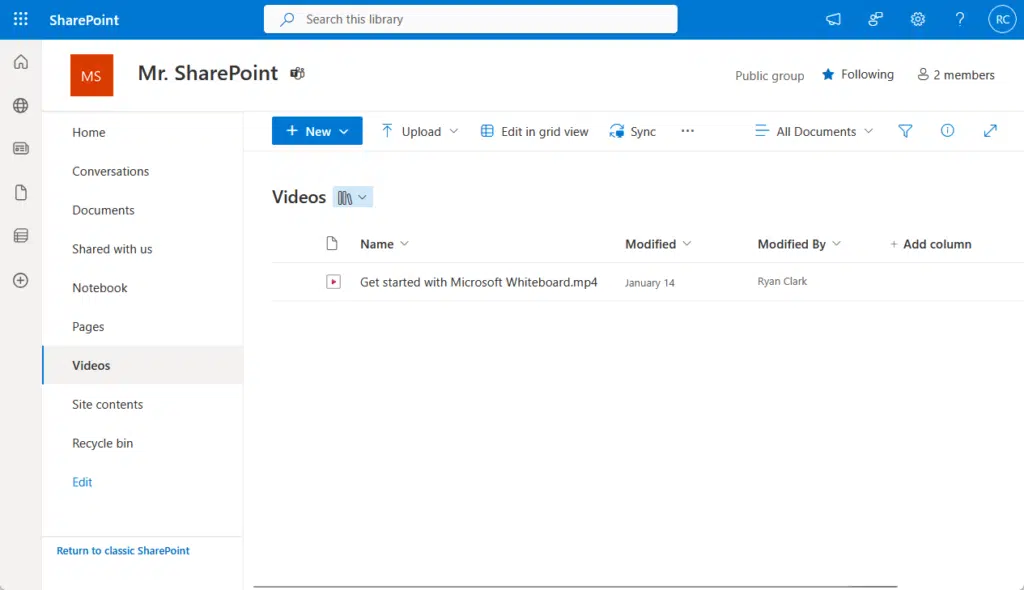
Managing videos on Stream is literally like managing any documents that you have in a document library.
Speaking of Microsoft 365, it supports multi-factor authentication and password protection, even on individual videos.
2. Integration with Microsoft 365 applications
Its integration with Microsoft 365 applications allows users to create, share, and view videos directly within familiar tools.
Its key features include:
- Share and watch videos within Teams channels and chats
- Insert videos into Outlook emails
- Embed videos into PowerPoint presentations
- SharePoint and OneDrive storage
- Share videos in Viva Engage communities
If you share a video on Teams, users will be able to share and watch the videos directly within the Teams channel.
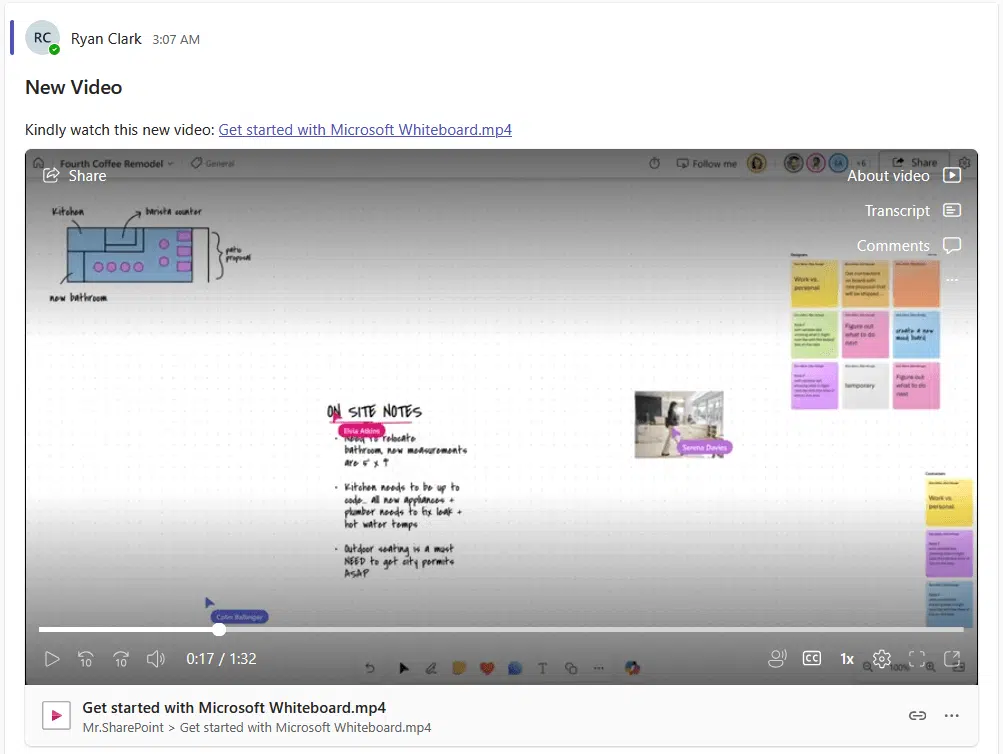
On some tools, you can embed the videos using insert functions, on others, copying and pasting the share link works.
But in most Microsoft 365 tools, including Outlook, you can embed a Stream video and the user will be able to view it there.
3. Automatic transcription and captioning
This feature is awesome as it generates text versions of spoken content, which can help those with hearing impairments.
Key aspects:
- Automatic generation of transcripts and captions
- Support multiple languages like English, French, and Spanish
- Users can edit transcripts
- Download options in different formats like .vtt or .docx
- Improves search by indexing spoken content
For example, in the video I kept showing in the screenshots, you will see a transcript panel on the right side in Stream.
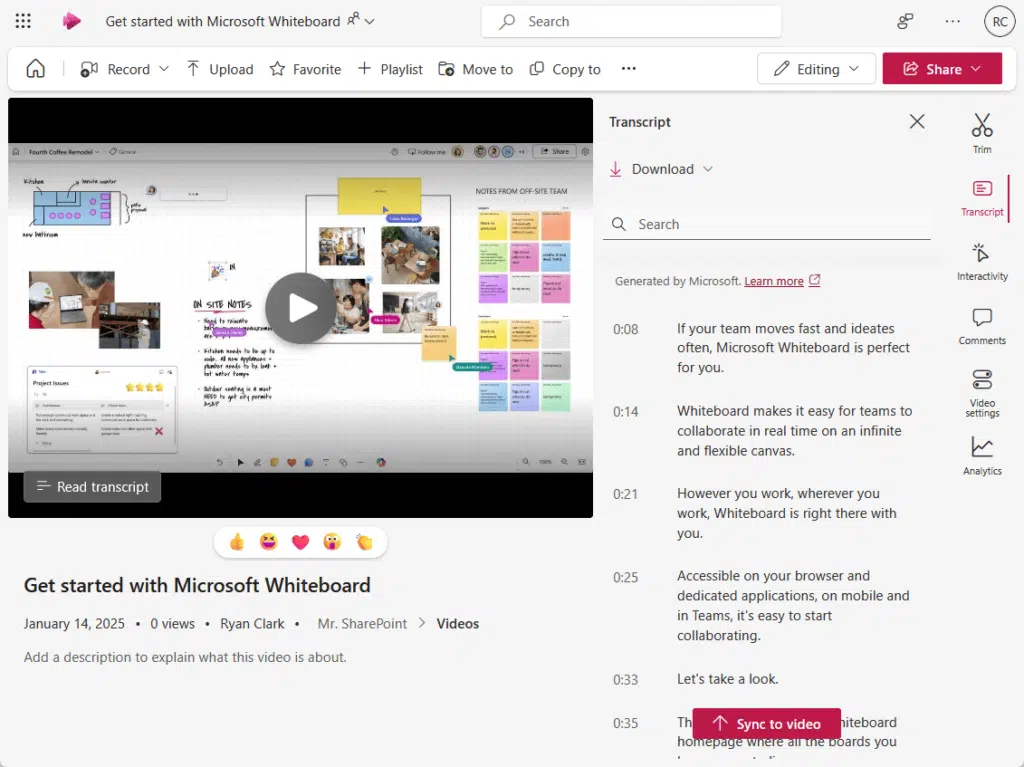
There’s a “CC” button in the video player that you can toggle to view the captions, which appear alongside the video.
If you don’t like captions or transcripts in the videos, administrators can disable them via tenant-level settings.
4. Support for live events and on-demand video content
Stream also has features that allow users to broadcast real-time events and access recorded content anytime.
Key functionalities here include:
- Live event broadcasting
- On-demand video access
- Integration with Microsoft Teams
- Interactive features
- Automatic recording
Users can easily schedule and produce live events by integrating with Microsoft Teams, which will then look like this:
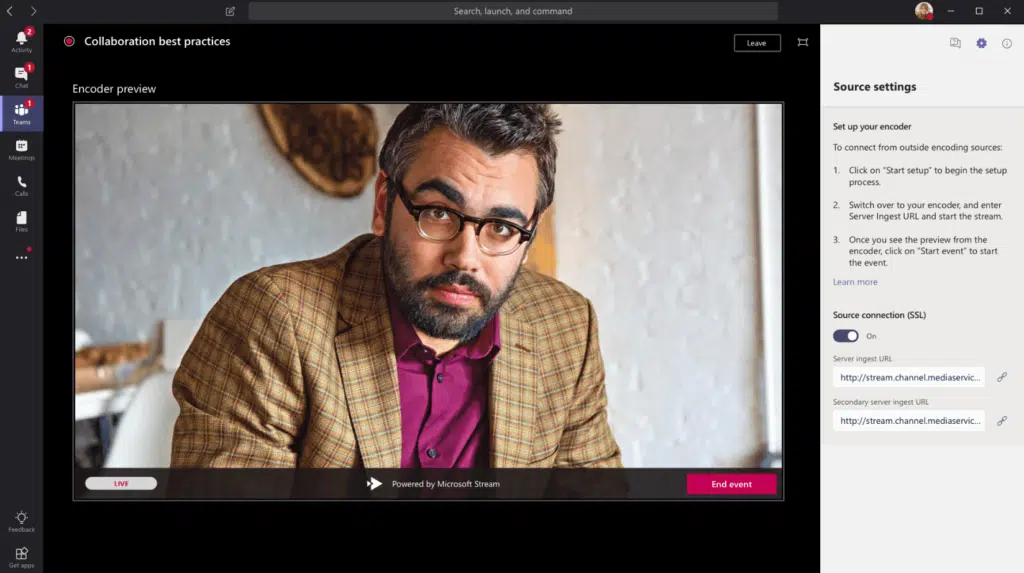
During these events, there are interactive features like Q&A sessions that can improve viewer engagement.
What’s nice is that after the live broadcast, events are automatically recorded and will be available for on-demand viewing.
5. Analytics
The last feature I want to mention is analytics, which allows content creators to assess their performance.
Key analytics features here include:
- View counts per vide
- Unique viewers
- Viewership trends
- Retention metrics
- Engagement peaks
You can check the analytics per video in the Stream web app under the Analytics tab:
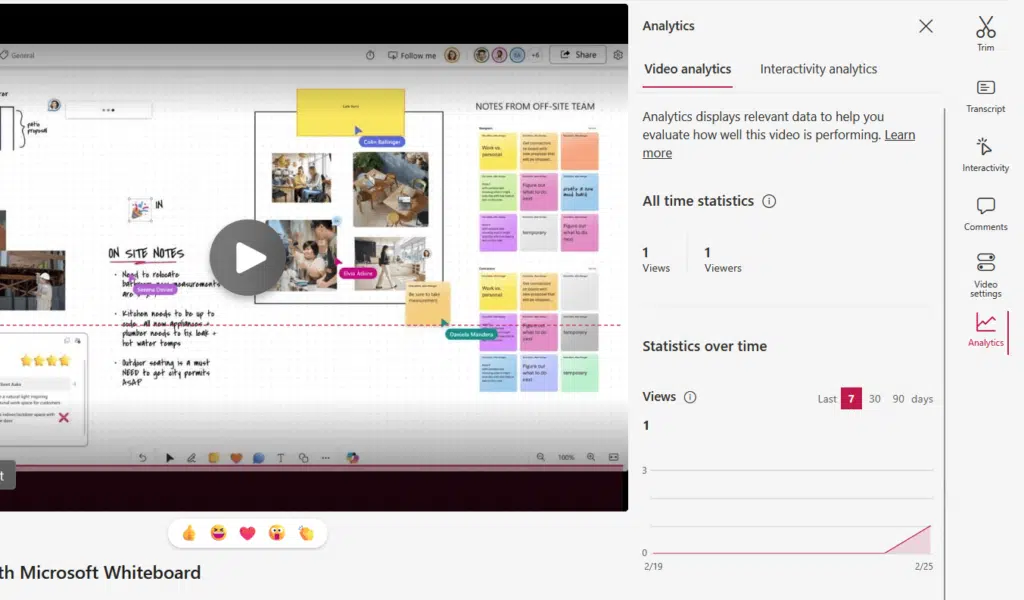
You can view data on views and unique viewers here over the past 7, 30, or 90 days and see the viewership trend.
There’s also a separate interactivity analytics that can help you monitor viewer engagement with added interactivity.
Sign up for exclusive updates, tips, and strategies
Use Cases for Microsoft Stream
The integration of Stream with Microsoft 365 greatly improves communication and collaboration.
But if you’re not sure when to use Stream, here are some ideas:
- Training and development
- Corporate communications
- Meeting recordings
- Onboarding
- Community engagement
For example, if you already have training videos, upload them to Stream and create a video playlist.
Organize your content into categories, and then you can send a link to the playlist to users who need the training.
Benefits of Using Microsoft Stream
As you can see, there are so many advantages to using Stream for your organization.
For example:
- A place where users can view and discuss video content without leaving Microsoft 365
- Features like quizzes and comments promote interactive learning and training
- Data-driven insights are available to help refine and optimize video content
You can see that Stream is now a dynamic tool for communication, training, and collaboration for organizations.
Do you have any questions about Microsoft Stream? Let me know in the comments below.
For any business-related queries or concerns, contact me through the contact form. I always reply. 🙂

